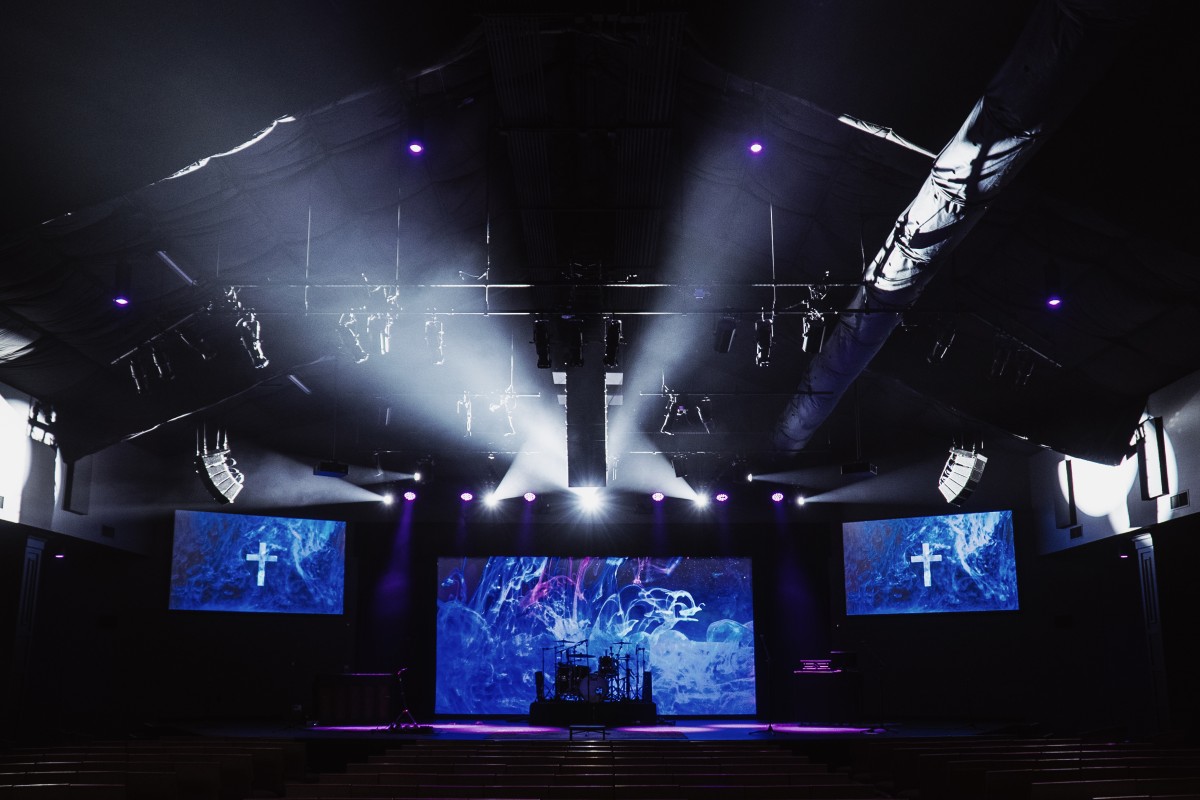Helping Houses of Worship Decide When to Upgrade Video Gear

For too many churches, the question of when to upgrade video gear, hangs around like a frozen video frame.
That reality has only grown with an increased focus toward streaming and broadcasting of worship services since March.
As with any piece of equipment, each will eventually reach a point at which it must be replaced. It is imperative to understand that for those working within ministry, one must seek to wisely balance use of the resources provided.
When Is It a Good Time for a Project?
With Christmas having passed a few weeks back, Easter is now a little more than two months away. Thinking of forging ahead with a video upgrade in the coming weeks? If you plan to finish with days to spare, before the first Sunday in April — hold up.
“It’s not good to do significant upgrades right before Christmas or Easter,” noted Duke DeJong, president of integration for Vantage Pro. “Instead, you want to have big projects done with four to six weeks before a big event. That way, the team has a time to train and learn.”
Bruce Colbert, sales engineer for CSD Group, based in New Haven, Indiana, agreed. “When making big updates, you want to work out the kinks and train,” he said. “Don’t make major upgrades a week or two before your big holidays, like Christmas or Easter.”
When installing a system a few days prior to the “big event,” still prepare to adjust. As Colbert described, “Things will likely work right away (following an install), but they won’t be optimized.”
When proceeding on a video project, provide enough time for the tech team staff and volunteers to succeed.
“One must account for the learning curve,” explained DeJong. “I often ask for two to three weeks of rehearsals, before they host a service in the building.”
Value in Finding the Right Project Partner
In figuring how to best upgrade a video system, turning to an integrator might be the logical next step. For many small- to medium-sized churches, though, a relationship with an integrator might not yet exist.
If you’re challenged by where to start, Colbert said, “First, ask other churches, if they have relationships with someone that went well.” In seeking the right integrator, Colbert added, “I’d definitely recommend working with an integrator that has experience working with churches.”
Elaborating on that point, DeJong said, “The best integrator is the one who understands what you’re trying to do. And they equip you to achieve your mission.”
Among the best ways for a church and an integrator to be successful on a video project — use a house of worship’s goals as a roadmap.
For example, when looking to expand video and streaming capabilities, detailed Colbert, “Are you just doing it for your church members who can’t make it to church? Or are you trying to widen your audience?” Depending on your answer, that will also further drive the upgrade.
As described by DeJong, “We can confidently build systems that fit a church’s five- to 10-year goals. Even if they have to be phased in.”

Avoid a “Paint-by-Number” System
One of the biggest hurdles for integrators is contending with churches that plow ahead and “buy five or six pieces that they think they need. They do so without asking for clarity about what they need,” said DeJong.
The problem?
Too often, the church will miss out on purchasing the correct items to effectively implement an ideal system. The project then is at risk of moving ahead with a “paint-by-number system,” added DeJong.
As a result, too often, “churches do purchases and installs that don’t get them to where they want to go,” explained Colbert.
Fighting the Battle on Cost
Even more challenging? When originally laid project plans get modified along the way, largely because of cost. DeJong noted that where one cuts can significantly be linked to a project’s overall success.
“Churches will occasionally want to cut a piece here or there. They think it makes sense, but often it is random,” he explained.
Citing one example, DeJong recalled a church seeking to cut $30,000 from the bottom line, mid-project. They approached the integrator about “getting rid of the router, recorder, adapters and an audio embedder,” aiming to cut costs. In a discussion with administration, he explained “needing a router (for the system). Also adding a router later would be complicated. In addition, you need an audio embedder, as it’s a critical infrastructure piece.”
Seeking to offer a more viable alternative, he proposed to “cut a camera and a com system for that camera. When you want to add it back in, it’s a simple add. The response? ‘Oh, that makes much more sense.’”
By working closely with an integrator on projects, Colbert noted such issues are avoidable.
“With video gear, it is complicated enough that most churches will not have the expertise, to know what’s out there and what the options are,” he said. “By working with an integrator, they will customize what you need, and not just buy a kit off the internet.”
Benefits of Upgrades
When churches look to invest in new video technology, a frequent premise points toward making the lives easier for staff and volunteers.
For Colbert, though, he hedged against such a mindset. For churches seeking to stream or broadcast services, and little else, Colbert noted, “They might initially be looking for a set-it-and-forget-it setup. To do it well, though, there’s no one-size-fits-all, don’t-touch-it-again setup.”
When choosing to upgrade, Colbert added, “Technology won’t make it easier for the staff. It will become more complicated, but with training, it will help them understand (the new technology) better.”
Paying Attention to Time
In determining when the right time is to upgrade, that can certainly become a focus. As DeJong said, “I’m often asked by senior leaders, ‘When do I get the idea it’s time to replace my gear?’”
Even with all his experience, DeJong responded with there being “no magic number … like seven years.”
For “end-of-life” video gear, it starts to exhibit having reached its end when “pixels start going out. Or visually when you start seeing problems on your shots, or things simply don’t turn on anymore,” noted DeJong.
More importantly, DeJong argued one shouldn’t be looking at a piece of gear as having a designated expiration date. Instead, focus on whether “you are no longer achieving the results that you are looking for,” when considering a change.

Recent Changes in Approach With Video
Looking back on the last 10 months, much has changed to how churches have approached video as part of ministry. A church’s progress, in terms of video, often depends on how long that church has been doing video in the first place.
“There were churches that hadn’t done anything with video, and needed to do it quickly,” said DeJong. To get those churches up and running quickly, he added, “That translated to buying something inexpensive and available.”
For those churches, despite successfully getting online, over time, the need to raise the bar has became apparent. Since then, those churches have now sought to improve on their video capabilities.
“Now, it’s ‘How do we get it better?’,” DeJong said.
Frequently, churches have discovered that despite their easily found streamed services or other video content, often those visits are brief. Oftentimes, the cause comes back to poor video resolution.
“Real far back, a lot of churches started in SD format,” noted Colbert. “Almost everyone has a good quality camera on their iPhones today. That’s what people expect for digital content. If your content is not at least at that level, people will switch off pretty quick.”
That makes sense, as congregation members have become increasingly accustomed to watching daily video content in 1080p or even 4K.
Beyond the streaming of worship services, churches are finding an increased value for using video in other areas of ministry.
“If they seek to grow their online presence, it’s about creating content that’s prerecorded, during the week,” explained Colbert. “To confine your video system to an hour on Sunday, is really not fully utilizing what the technology can do.”
Finding Support For New Video Tech
Oftentimes, in the face of a church’s growing video needs, despite recommendations by tech team staff, administration opts against an upgrade.
To get stronger buy-in from administration, DeJong explained, “Talk about what the upgrades allow the ministry to achieve, versus what the technology does.” In simple terms, DeJong added, “(Administration) won’t care about features, brand names or how cool it is. They care about results. For example, will it provide a clearer picture for those watching the stream?” Colbert agreed, asking, “How will this upgrade accomplish our mission better? Will the quality go up, so that people will be willing to stay with us, and not click off?”
Images included are from Calvary Church, Valparaiso, Indiana, provided by Doug Hood, CSD Group.





